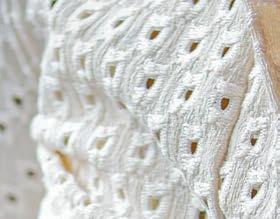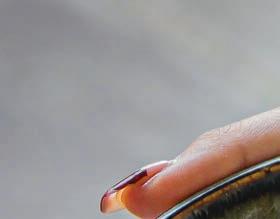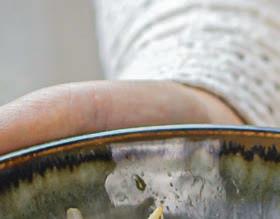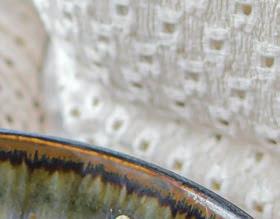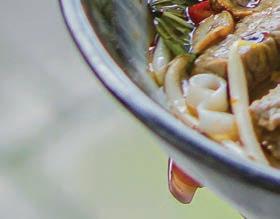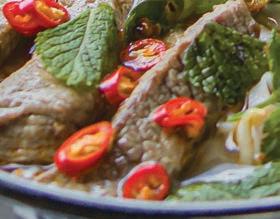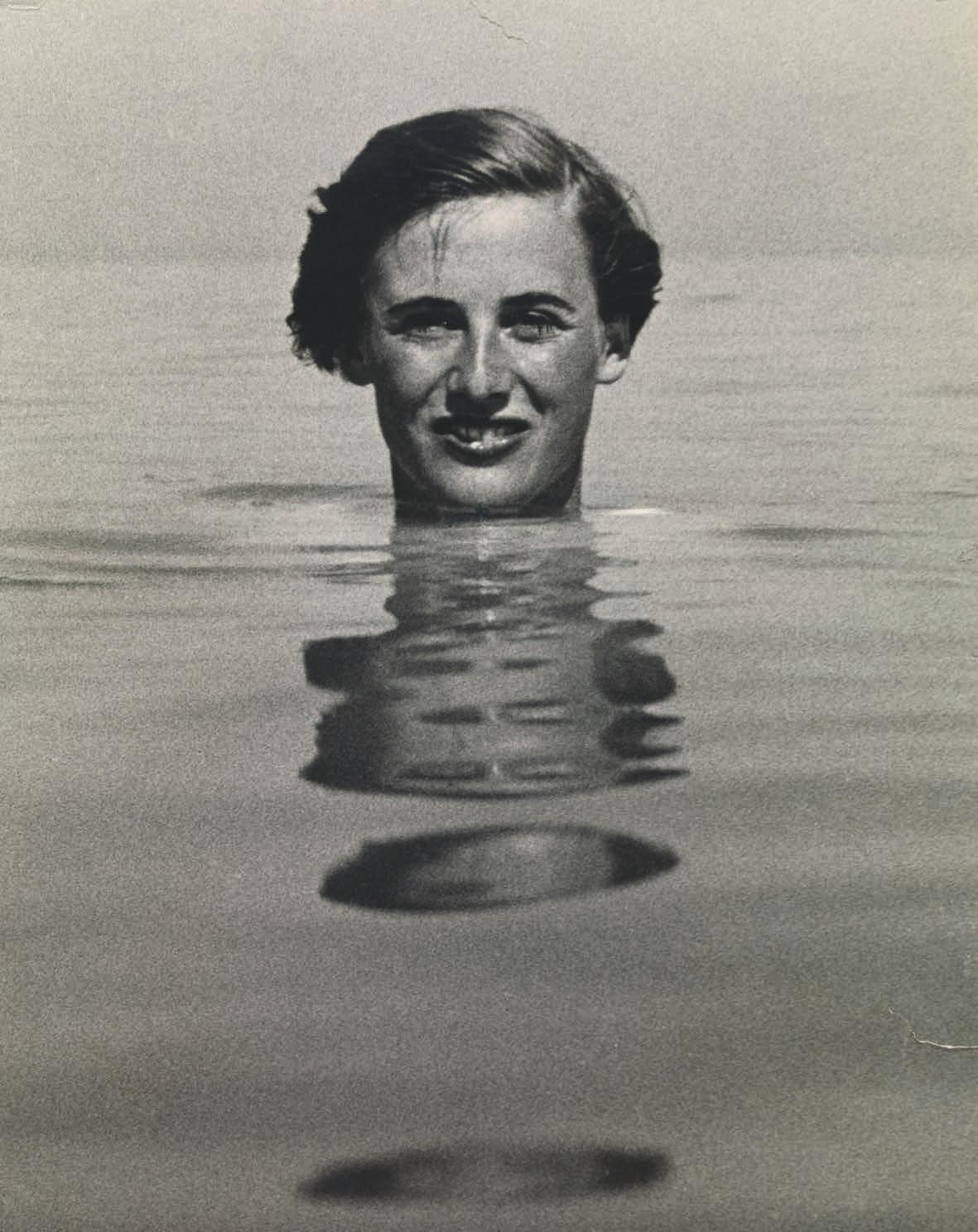
7 minute read
PHOTOGRAPHY
BILL BRANDT, WOMAN SWIMMING TATE. ACCEPTED BY HM GOVERNMENT IN LIEU OF INHERITANCE TAX FROM THE ESTATE OF BARBARA LLOYD AND ALLOCATED TO TATE 2009 © THE ESTATE OF BILL BRANDT
CANDID CAMERA
An exhibition dedicated to the work of Bill Brandt reveals the secrets of the photographer’s artistry
By EVE HERBERT

Bill Brandt: Inside the Mirror, this is Tate Britain’s first exhibition dedicated to celebrated British photographer Bill Brandt (1904-1983). It reveals the secrets of his artistry and the fascinating ways he staged and refined his photographs. Bill Brandt was first known as a photojournalist, renowned in the 1930s for his observations of British life and later for his landscapes, portraits and nudes. But his images were always carefully crafted to ‘enter the mirror’, as he put it, employing formal experimentation and artistic interventions to evoke the surreal beauty he saw in everyday life. This exhibition celebrates his theatrical direction of people and setting, his mastery of composition and abstraction, and his dialogues with the work of other artists.
Although Brandt’s images can appear candid and spontaneous, he did not capture people unaware. He worked closely with those he photographed, directing and lighting them to cast ‘the spell that charges the commonplace with beauty’. He sometimes waited for hours to capture e ects at specific times of day – as in Woman Swimming – and some of his most mysterious scenes were taken at night. Brandt developed his own film and printed his own photographs, giving him further opportunities to rebalance light and dark, and change the composition through cropping and enlarging. He even used ink and pencil to alter prints, for example introducing plumes of smoke onto
Hail, Hell & Halifax. The series of Brandt’s nudes shown in the exhibition include some of his best-known and most evocative works, which further explore his interest in altered perspectives, surreal e ects and abstract compositions.
As well as being an artist in his own right, Brandt took inspiration from many other artists and art forms. The
BILL BRANDT, NUDE, TAXO D’AVAL, FRANCE 1957, LATER PRINT TATE. ACCEPTED BY HM GOVERNMENT IN LIEU OF INHERITANCE TAX AND ALLOCATED TO TATE 2019 © THE ESTATE OF BILL BRANDT
BILL BRANDT, GLENDA JACKSON 1971 TATE. GIFT ERIC AND LOUISE FRANCK LONDON COLLECTION 2013 © THE ESTATE OF BILL BRANDT BILL BRANDT, PORTRAIT OF A YOUNG GIRL, EATON PLACE 1955 TATE. GIFT ERIC AND LOUISE FRANCK LONDON COLLECTION 2013 © THE ESTATE OF BILL BRANDT

exhibition explores some of these conversations between his photographs and other imagery, from Gustave Doré’s engravings of London to Henry Moore’s air raid shelter drawings and Orson Welles’ 1941 movie Citizen Kane. Brandt’s handmade photobook ‘A Dream’ – which is being exhibited for the first time – reveals further influences, such as John Tenniel’s surreal illustrations to Alice in Wonderland and the dramatic shadows of Expressionist cinema. Brandt also became famous for his portraits of artists, such as the actor Glenda Jackson at home in the early 1970s, and there is an arresting close-up of sculptor Louise Nevelson’s eye.

Until 15 January 2023; tate.org.uk
COUNSEL TILE

THE ARAB HALL, LEIGHTON HOUSE ©RBKC, LEIGHTON HOUSE. IMAGE COURTESY DIRK LINDNER
A look at Leighton House’s impressive new refurbishment
Leighton House has reopened after a major transformation. Famed for its opulent interiors, extraordinary mosaic floors and tiles acquired through Lord Leighton’s travels to Turkey, Egypt and Syria, the Holland Park house is a beloved destination for all design enthusiasts.
The project has focused on the twentiethcentury additions made in a new wing at the east end of the original house, which has been completely refurbished revealing original historic features and creating new exhibition spaces and displays, the De Morgan café which opens onto the redesigned garden, a new Learning Centre and a collections store.
Leighton’s Winter Studio, an extension of the original house supported on cast iron columns and built at the end of the 1880s to allow him to work through the winter months, is now fully restored and integrated into the rest of the historic house interiors. The Entrance Hall has been reinstated as it was in Leighton’s day, featuring a large painting from the workshop of Domenico Tintoretto, which formed part of Leighton’s original collection. A separate entrance to the house, specifically used by Leighton’s models, is also revealed. This was a common feature of the time, used to signal the professional and o cial role of the model whilst keeping them separate from families, something not applicable to Leighton but he adhered to anyway in order to follow social etiquette.
The new wing features a series of commissions that respond to the iconic interiors of the historic house and continue the house’s unique dialogue with artists and craftsmanship from the Middle East
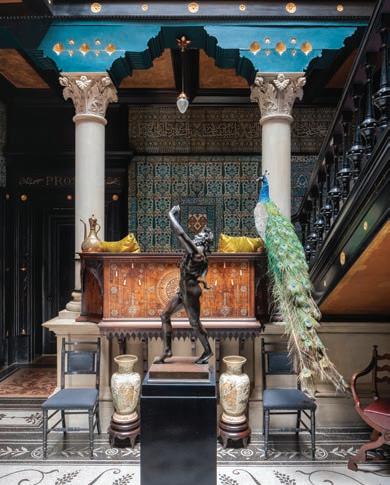
THE NARCISSUS HALL ©LEIGHTON HOUSE, RBKC. IMAGE COURTESY OF WILL PRYCE STAIRCASE HALL, LEIGHTON HOUSE ©RBKC, LEIGHTON HOUSE. IMAGE COURTESY DIRK LINDNER

THE SILK ROOM, LEIGHTON HOUSE ©RBKC, LEIGHTON HOUSE. IMAGE COURTESY DIRK LINDNER

DRAWING ROOM, LEIGHTON HOUSE © RBKC, LEIGHTON HOUSE. IMAGE COURTESY DIRK LINDNER

and North Africa. Oneness, the first contemporary artwork on permanent display at the museum, is an 11-metre-high mural hand-painted by the Iranian artist Shahrzad Gha ari, which envelopes the curved walls of a new helical staircase across three floors. Inspired by a 13th century poem by Rumi exploring cultural unity, its turquoise calligraphic brushstrokes reference the distinctive tiles from the iconic Arab Hall. A suite of specially commissioned furniture handmade by Syrian artisans based in Amman, Jordan, is also featured in the new spaces. The pieces feature marquetry derived from inlaid motifs on a Syrian chest that Lord Leighton acquired on his travels and converted into a seat within the historic house and were created in partnership with Turquoise Mountain - a UK charity set up to preserve and develop traditional craft practices, originally in Afghanistan, as a means of economic regeneration. An ambitious exhibition programme runs throughout the year, presented across the two new gallery spaces.
Artists and Neighbours: the Holland Park Circle continues until 19 March and examines the story of the Holland Park Circle, a unique community of prominent artists whose fashionable, purposebuilt studio-houses, many of which still border Leighton House, heralded the era of the artist as celebrity. Simultaneously, A Life of Drawing: Highlights from the Leighton collection (to 19 February) showcases a rarely-seen selection of Leighton’s exceptional studies and sketches made within his studio and on his travels.
Leighton House reopens its doors to visitors in tandem with its sister museum, Sambourne House - a virtually unaltered Victorian terraced house nearby that provides a unique window into the art and society of the era. Together, the houses o er a programme of live events providing an intimate look into the world of each artist and their connections with our contemporary world.


DRINK & FOOD


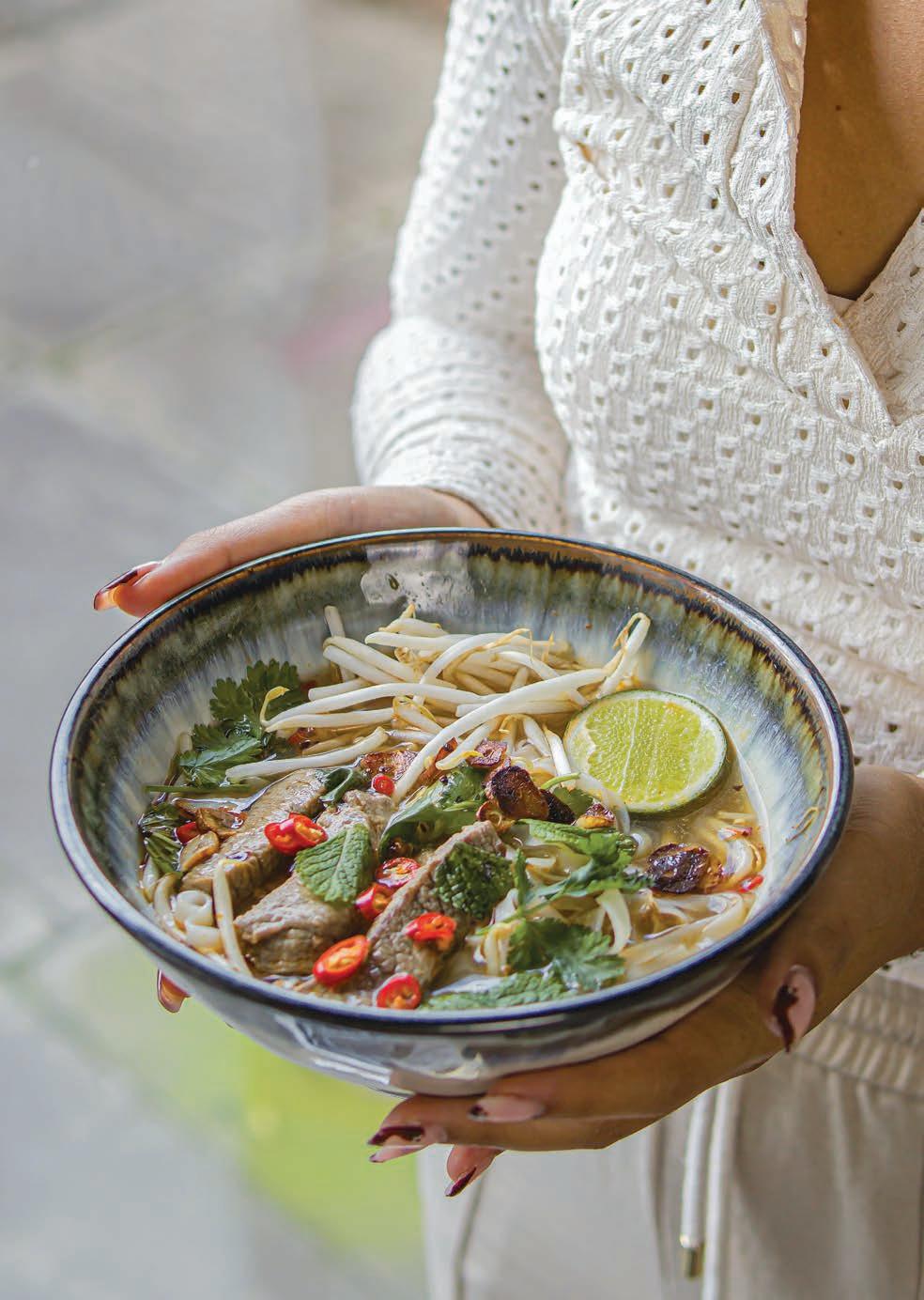
SOUP IN A BOX
PHOMO Freshly prepared using the highest quality ingredients and their secret weapon, a delicious 16+ hour bone broth, Phomo’s finsh-at-home kits include everything you need to create restaurant style Phõ quickly and easily at home. Simply unpack, heat the broth and assemble your nutritious bowl of deliciousness. phomouk.com
